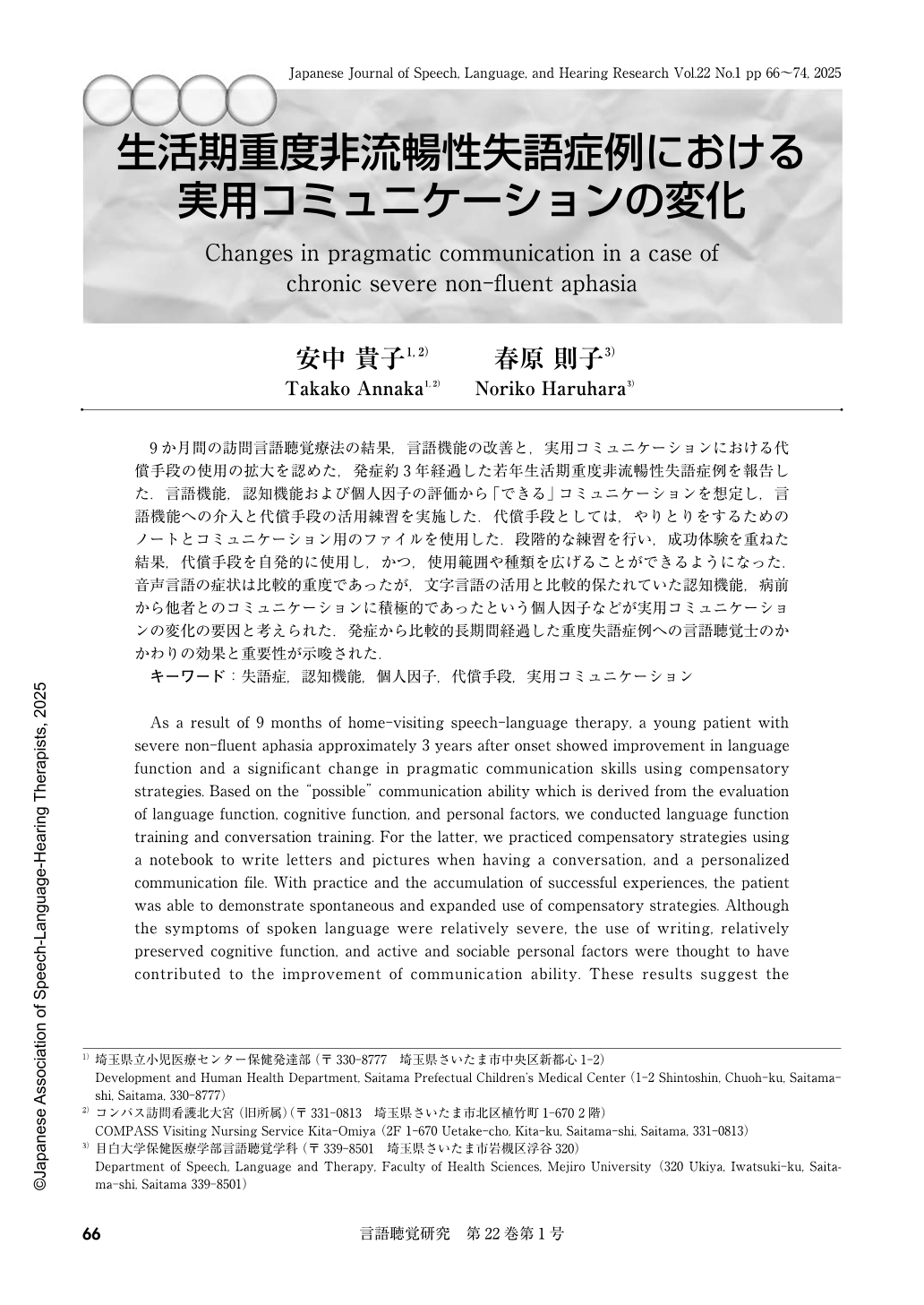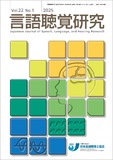Japanese
English
- 有料閲覧
- Abstract 文献概要
- 1ページ目 Look Inside
- 参考文献 Reference
9か月間の訪問言語聴覚療法の結果,言語機能の改善と,実用コミュニケーションにおける代償手段の使用の拡大を認めた,発症約3年経過した若年生活期重度非流暢性失語症例を報告した.言語機能,認知機能および個人因子の評価から「できる」コミュニケーションを想定し,言語機能への介入と代償手段の活用練習を実施した.代償手段としては,やりとりをするためのノートとコミュニケーション用のファイルを使用した.段階的な練習を行い,成功体験を重ねた結果,代償手段を自発的に使用し,かつ,使用範囲や種類を広げることができるようになった.音声言語の症状は比較的重度であったが,文字言語の活用と比較的保たれていた認知機能,病前から他者とのコミュニケーションに積極的であったという個人因子などが実用コミュニケーションの変化の要因と考えられた.発症から比較的長期間経過した重度失語症例への言語聴覚士のかかわりの効果と重要性が示唆された.
As a result of 9 months of home-visiting speech-language therapy, a young patient with severe non-fluent aphasia approximately 3 years after onset showed improvement in language function and a significant change in pragmatic communication skills using compensatory strategies. Based on the “possible” communication ability which is derived from the evaluation of language function, cognitive function, and personal factors, we conducted language function training and conversation training. For the latter, we practiced compensatory strategies using a notebook to write letters and pictures when having a conversation, and a personalized communication file. With practice and the accumulation of successful experiences, the patient was able to demonstrate spontaneous and expanded use of compensatory strategies. Although the symptoms of spoken language were relatively severe, the use of writing, relatively preserved cognitive function, and active and sociable personal factors were thought to have contributed to the improvement of communication ability. These results suggest the effectiveness and importance of the involvement of speech-language-hearing therapists in cases of severe aphasia with long time post onset.

Copyright © 2025, Japanese Association of Speech-Language-Hearing Therapists. All rights reserved.


